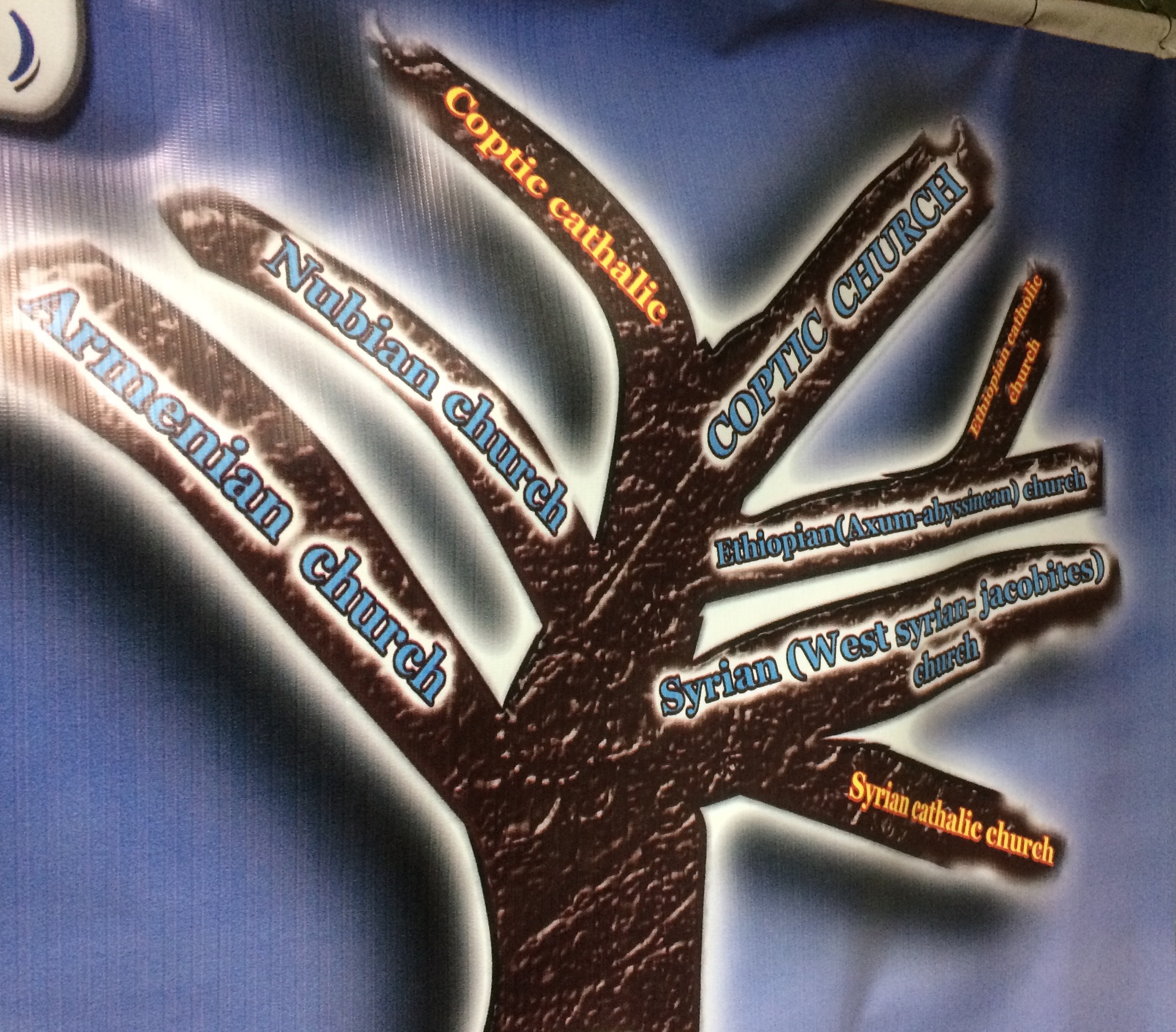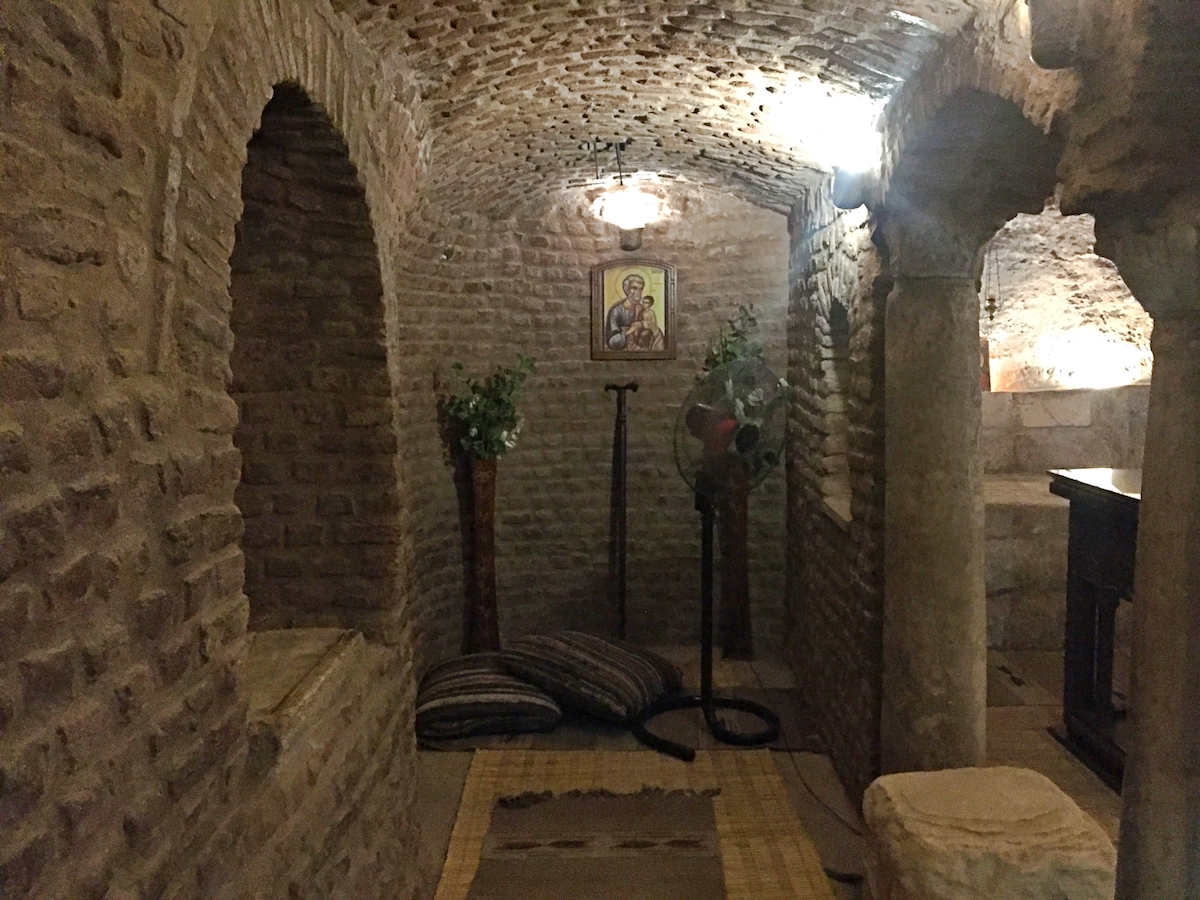A Letter from Noah Park and Esther Shin, serving in Cairo
July 2019
Write to Noah Park
Write to Esther Shin
Individuals: Give online to E200536 for Noah Park and Esther Shin’s sending and support
Congregations: Give to D507591 for Noah and Esther’s sending and support
Churches are asked to send donations through your congregation’s normal receiving site (this is usually your presbytery).
The Lord Almighty will bless them, saying, ‘Blessed be Egypt my people …’ Isaiah 19:25
A couple of weeks ago, we traveled to Upper Egypt to visit our students who are doing their summer internships in small congregations and with ministries for prisoners, people with disabilities, and those struggling with addiction. There we had an unexpected companion. A policeman followed us for two days, waiting for us inside or outside our meeting places. We were even escorted by a small police truck with soldiers for two hours when we came back to Cairo. This experience made us more thankful for the Evangelical Theological Seminary in Cairo (ETSC), where we can engage in our teaching ministry free from a “special fellow” with us.
We learned many things about the ministry settings of our students and graduates through our visitation to El Minya and Malawee. One of the common challenges that they mentioned is “building healthy relationships with Coptic Christians” in rural villages. There is sometimes a rivalry between Coptic and Evangelical congregations as they both engage in Christian ministry in this Muslim-majority society.
With about 400 congregations, the Evangelical Presbyterian Church of Egypt (Synod of the Nile) is the largest Protestant denomination in the Arabic World. Yet, it is a tiny minority compared with the Coptic Orthodox Church, which, while it is still a minority, has at least 9 million Christians in Egypt — nearly 10% of the population — though many of them can’t and don’t come to church for worship. In order to understand the Evangelical Christians in Egypt, it is necessary to understand the Coptic Church and its long history. We often notice that the lack of knowledge of Coptic Christianity leads our students into believing that Western Christianity is the only source of Christian spirituality or even into denying their own faith heritage.
Our experience at St. Mary’s Coptic Orthodox ChurchRecently, our Coptic student Youssef invited us to the traditional Coptic worship at St. Mary’s Coptic Orthodox Church in Abbasia. When we arrived at 8 a.m., the service had already been underway for an hour. Soon we knew that we were at the beginning of the second liturgy in the three-hour worship service. The first is a preparation of hearts to listen to God’s Word through praises and prayers. The second includes scripture readings and a sermon. The whole congregation retells the story of salvation from creation to Christ’s coming by reciting or reading stories from the Bible for almost 45 minutes. The last liturgy, the communion, follows.
Youssef softly and kindly explained each step of the worship so that we could understand and enjoy the rich symbols in the liturgies. We were especially impressed by how Coptic Christians joined the Lord’s Table in the icon-filled sanctuary. Everybody took off his or her shoes as Moses did at Mt. Sinai, went forward, and received and ate the bread on a special handkerchief to avoid losing even a crumb. Before going back to their seats, they washed their mouths with water. The whole worship service seemed to be designed for the Eucharist. At St. Mary’s, the same worship is offered four times a week — Wednesday, Friday, Saturday and Sunday.
Coptic Christianity in Christian History
In Christian history, the Coptic and Armenian Churches are considered Oriental Orthodox. At the Council of Chalcedon in 451 CE, the Oriental Orthodox Church split from the Eastern Orthodox Church. The split occurred primarily over differences in Christology. This theological debate is very difficult to follow, and fortunately, both Oriental and Eastern Orthodox leaders have recently agreed that the old debate stemmed from different terminologies.
The origin of Coptic Christianity can be traced back to the apostolic era. St. Mark, an evangelist, is believed to have founded the church in Alexandria in the early 40s CE. This story is also connected to the Catechetical School of Alexandria, the most prominent theological institution during late antiquity. Origen, Clement of Alexandria, Jerome, Arius and Athanasius were associated with this school. The theological debate between Arius and Athanasius led to the Nicene Council of 321 CE and the Nicene Creed we currently use in our worship.
Ancient Egyptian Christianity left another gift for the development of later Christianity. St. Anthony, who died in 356 CE, was the first “monk” and the founder of the first monastery in the Red Sea area. This spiritual movement was understood as a voluntary martyrdom when persecution stopped after the Emperor Constantine’s acceptance of Christianity in 313 CE. Monasticism grew quickly in Egypt, and other areas soon imported it as a model for all Christian monasticism.
Coptic Christianity, which had emerged from the earliest Christianity, was challenged by the Arab invasion in 639 CE. However, until the 12th century, Coptic Christians remained a majority despite widespread gradual conversion to Islam. The Muslim rulers ruled Christians with the Jizya tax, which was levied on Christians as a fee for protection provided by the Muslim ruler and for the exemption from military service. The tax was abolished in 1855. Coptic Christians have survived Islamization for about 1500 years. Their religious identity is very strong.
Coptic Churches and Evangelical (Presbyterian) Churches in Egypt
Christianity itself has existed in Egypt for almost two thousand years. Despite tension between the Coptic Church and the Evangelical Church, they are intertwined in positive ways. The Coptic Church set the precedent for the Evangelical Church’s planting and growth. The Evangelical Church has stimulated the Coptic Church with practical ideas of ministry such as Sunday School, social service and public education. To a great degree, the survival and security of the Evangelical Church is closely tied with the Coptic Church.
This context gives advantages to the Evangelical Church both in Egypt and in the Arab world. Our graduates do their ministry in a much more stable context than in other Arabic-speaking countries where Christianity has dwindled down to 1-3% of the population. The presence of both the Evangelical Presbyterian Church and ETSC, the largest Protestant denomination and seminary, are proof of this. With more students enrolling each year, especially in the online program, we have come to believe that God is working for the Arab World through ETSC. This seminary is a strategic base for faith, hope and love for Arabic-speaking communities inside and outside Egypt. Please pray for our students who are completing their summer internships in rural villages.
This summer is a bit challenging to us because we won’t see our son, who is in college, until December. Yet it is a blessed time for us since we can enhance our Arabic and develop deeper relationships with our students. We thank you for your continuous support and prayers for our ministry at ETSC as we share God’s vision for Arab-Christian communities.
The Lord Almighty will bless them, saying, ‘Blessed be Egypt my people …’ Isaiah 19:25
In Christ,
Esther and Noah
![]() You may freely reuse and distribute this article in its entirety for non-commercial purposes in any medium. Please include author attribution, photography credits, and a link to the original article. This work is licensed under a Creative Commons Attribution-NonCommercial-NoDeratives 4.0 International License.
You may freely reuse and distribute this article in its entirety for non-commercial purposes in any medium. Please include author attribution, photography credits, and a link to the original article. This work is licensed under a Creative Commons Attribution-NonCommercial-NoDeratives 4.0 International License.
Tags: Ancient Egyptian Christianity, connection, Coptic Christianity, Coptic Orthodox Church, Eastern Orthodox, ETSC, Evangelical Presbyterian Church, Evangelical Theological Seminary in Cairo, history, influence, interns, Islam, Oriental Orthodox, relationships, roots, St. Mary’s Coptic Orthodox Church
Tags: Noah Park and Esther Shin





